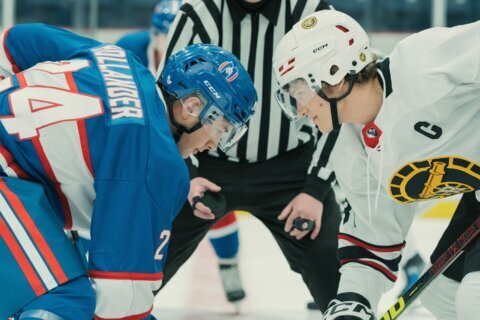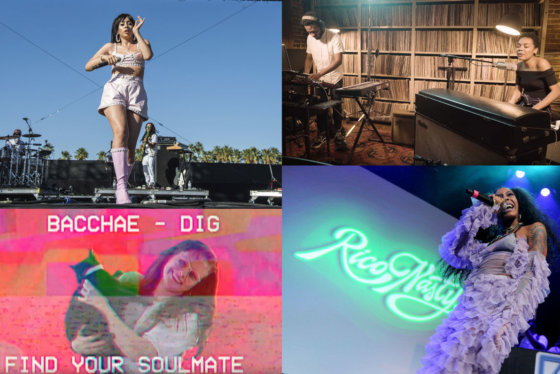Kacey Musgraves and Childish Gambino dominated the Grammys last month, but what about the local stars who are yet to be discovered? Well, they might just come from the Wammies.
The local music award show is being revived by the nonprofit group The MusicianShip and promoted by Listen Local First. It includes an all-day conference Saturday at Decades DC in Dupont Circle and an award show Sunday night at Lincoln Theatre on U Street Northwest.
“This is the first time in three years that the Wammies is coming back,” Listen Local First founder Chris Naoum said. “It had been happening for 30 years. … You used to have to pay to be a part of it; now under The MusicianShip … anyone can be a part of it. … We’re resurrecting the brand and we hope that this is going to be a way to amplify the D.C. music community.”
This year’s finalists include 150 nominees across 62 categories, including bluegrass, blues, classical, country, folk, funk, go-go, gospel, jazz, pop, punk, rap, rock, R&B, techno and more. The public votes for the nominees, while a panel of 50 judges selects the eventual winners.
“We hope that it’s an easy entry point (to D.C. music),” Naoum said. “If you look up local music, you look up the Wammies and you see last year’s nominees, that gives you an easy entry point to see who is nominated, who won and who are some bands you should check out.”
Another easy entry point is the group’s continually curated “Playlist” on Spotify.
“If they’ve released an album in the last three months, they make it on that quarterly playlist,” Naoum said. “Whenever I come across an artist that released new music, I’ll add a track to the playlist. Really, you just have to be a DMV band. I’m not making any decisions of what I like, what I don’t like; this is D.C. music, it’s on Spotify, they’ve made it, if you want to check it out.”
The Wammies and the Playlist are just two of the many ways that Listen Local First promotes homegrown talent. It also spreads the word about the Kingman Island Bluegrass Festival on May 4, the Funk Parade on May 11 and the Music Policy Forum Summit on Oct. 26-27.
“(It’s) a music initiative created in 2011 with the purpose of creating alternate avenues for local music exploration, finding ways for fans to connect with audiences, finding ways for audiences to find out what’s happening on the local scene, and creating partnerships between local artists who are local businesses and others in the business community,” Naoum said.
While the D.C. music industry is commercially booming with fancy new venues, such as The Anthem, most cater to major touring artists with a small percentage of local artists on the bill.
“When we talk about the strength of the scene and say the (D.C.) music scene is awesome, we need to take a step back,” Naoum said. “Just because there’s a shiny new building and a shiny new venue does not mean that the artists from D.C. are surviving. They’re barely scraping by. They’re needing to move out of D.C. to survive. A lot are moving up to Baltimore because it’s so much more affordable. That’s the real litmus test of how this scene is doing: Can you live here? Can you sustain a life as a full-time musician? The answer is increasingly no.”
He said it’s tough when venues promise “exposure” in lieu of money.
“The term ‘exposure’ is played out,” Naoum said. “Exposure is what happens when you sit out in the cold and you die, but it’s not going to put food on your plate. … A lot of musicians in a lot of genres have supplemented incomes. They work at bars, office buildings, other things.”
David Poznansky of the indie band Easy Sleeper is one of those artists.
“A lot of the people I run into on the scene feel like they’re doing two things at the same time — working their job and trying to excel with that, but then trying to push their art,” Poznansky said. “The support of venues and people like Chris who advocate for artists is critical because making money at a packed gig helps your band move forward. … Whether those artists are playing at house shows, smaller venues, bars, they’re sharing their art and there’s a sense of community building each other up. … There are some very talented acts that call D.C. home.”
Who are some of those acts to look out for?
“Some of my favorites include Yesferatu, Weston Smith, Miss, Understand Me, Taciturn and FootsXColes,” Poznansky said. Naoum added, “There’s a huge D.C. hip-hop scene. There are more hip-hop artists coming out and actually performing with major national artists than probably any other genre. Innanet James is the big one right now. … The other thing is neo-soul. There’s a lot happening in the young neo-soul, funk, jazz, experimental jazz world.”
It’s just the latest evolution of the U Street corridor, which was once affectionately known as Black Broadway before losing many of the historic music clubs that once called it home.
“You had the loss of Bohemian Caverns, the loss of HR-57, all these places that used to host jazz (and) go-go, you’ve seen them disappearing,” Naoum said. “In the last couple of years, you’ve had Marvin, Sotto, Bin 1301, a number of places around the U Street area that are picking up on the jazz scene and having amazing jazz jams probably five days a week. You’re seeing that growing, but it’s only been in the last year or two that it’s re-establishing itself.”
Which other venues regularly showcase local musicians across the city?
“Songbyrd Vinyl Lounge, you can grow as an artist there,” Poznansky said. “The Pie Shop on H Street supports local acts. … Dwell is a great house venue, Epicure in Fairfax, Virginia, focuses on the idea that these are safe, inclusive spaces where you are comfortable to share your best work. … DC9, Songbyrd and Rock & Roll Hotel are increasingly leading the charge.”
“I would throw in Rhizome in Takoma Park, especially for the more experimental work,” Naoum added. “Dew Drop Inn is hosting a lot of interesting shows, almost all local music.”
Naoum believes there’s a place for these venues amid the major promoters like IMP.
“We love the fact that IMP is here, they’re not Ticketmaster, they’re not LiveNation, we have our own powerhouse in D.C., and there are different ladders that venues are doing allowing musicians to climb,” Naoum said. “Most venues like the Black Cat will have a mix of national and local acts, but a lot of venues don’t own their venues. They’re renting on long-term leases, so they have to deal with rising rents in their neighborhoods, which is problematic. A lot of the work that Listen Local First has been doing is to help local venues get over this.”
Rather than just talking the talk, the group is actually walking the walk by pushing policy.
“The Capitol Hill Jazz Foundation, which is Aaron Meyer and Herb Scott, proposed legislation through councilmember (Robert) White about a year and a half ago called the Performing Arts Promotion Amendment Act, which essentially gives a tax credit to small venues,” Naoum said. “If they have music 40 hours a month or more, they get up to a $10,000 or $15,000 tax credit.”
Even with such legislation, there are larger citywide roadblocks.
“There are lots of restrictive clauses where certain neighborhood associations have decided you can’t have live music, even if you have this tax credit,” Naoum said. “The city still has a lot to do to look at the music scene overall and assess the needs from all aspects in order to grow. Yes, it’s more venues, but also providing more resources and infrastructure to the artist community. … That’s how we build creative economies, not the people at the top making the decisions because they’re somewhat out of touch with what’s happening on the local level.”
In the meantime, D.C. residents can do their part by checking out live local music.
“(Hit) venues that find value in having local artists advance their sound, find a larger audience and grow with the music scene, as opposed to popping in, playing and leaving,” Poznansky said. “If you want to find what’s great in local music, go to shows, take a chance on a show, see what Facebook recommends, see what your friends are going to and go support the scene.”
Find more on the Listen Local First website. Hear our full chat with Naoum and Poznansky below:









